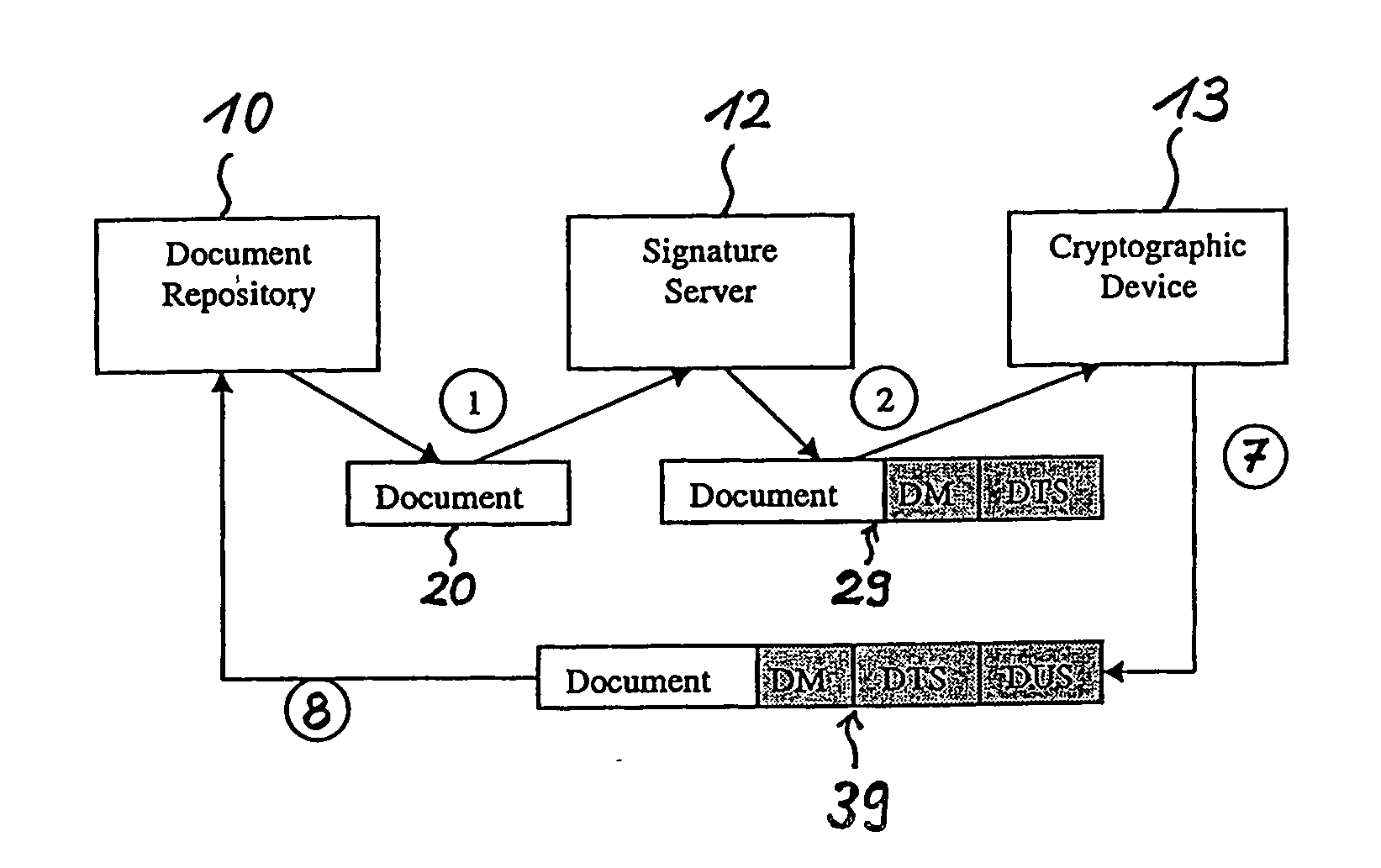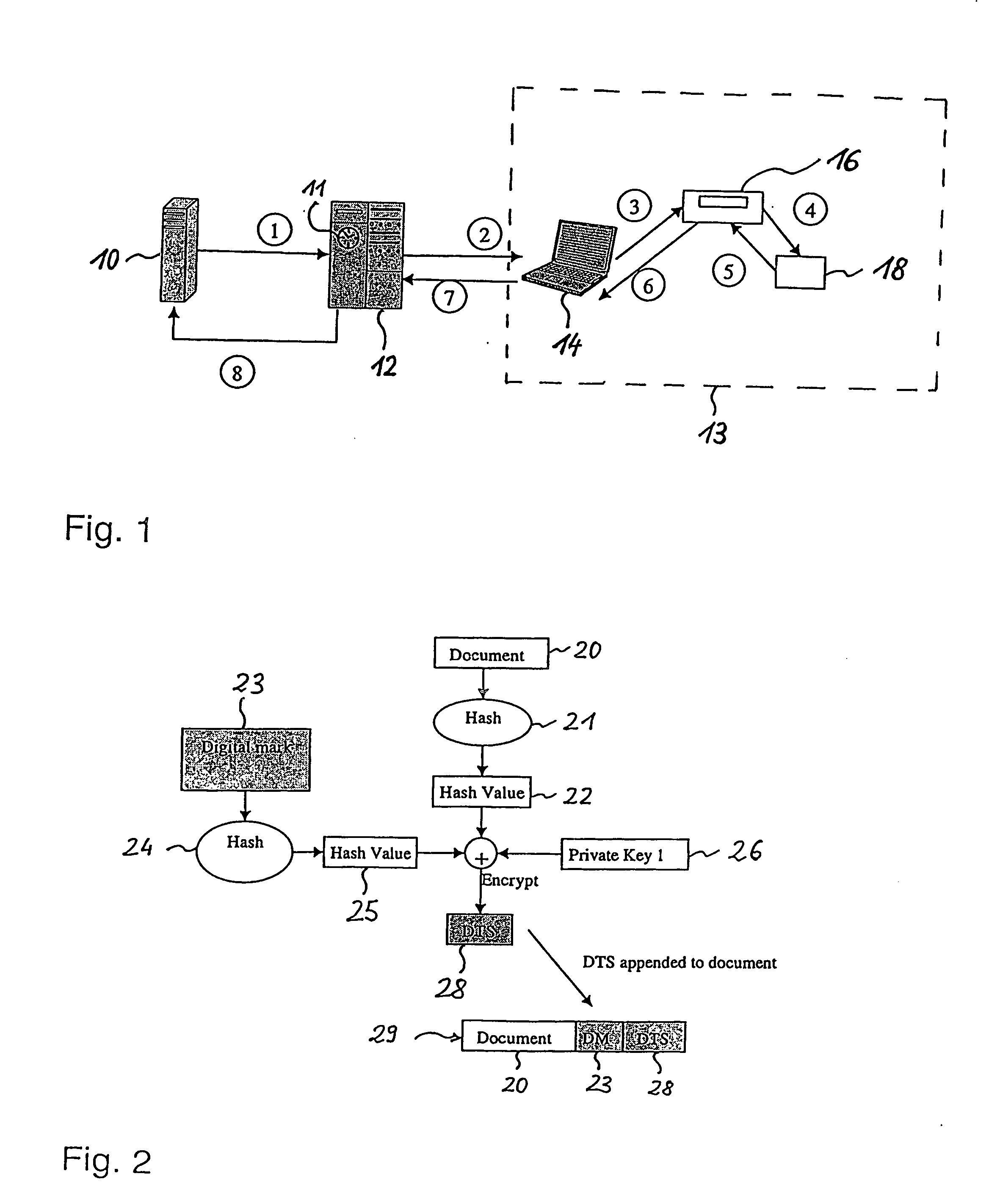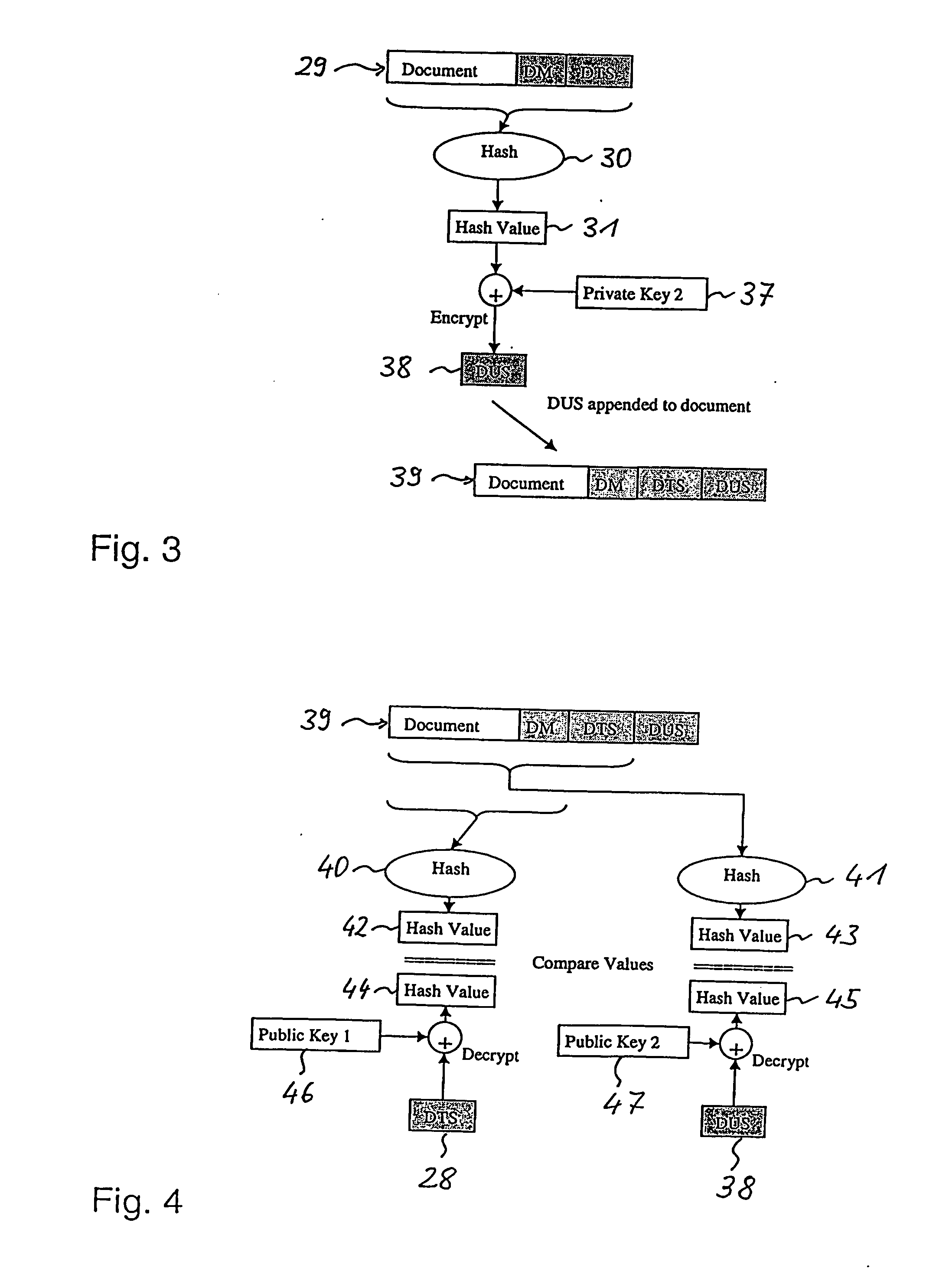Long-term secure digital signatures
a digital signature and long-term technology, applied in the field of long-term secure digital signatures, can solve the problems of limited computational power, inability to fulfill, document security, etc., and achieve the effect of less computationally intensive key revocation, simplified revocation process and convenient key revocation
- Summary
- Abstract
- Description
- Claims
- Application Information
AI Technical Summary
Benefits of technology
Problems solved by technology
Method used
Image
Examples
Embodiment Construction
[0032] In the following, the various exemplary embodiments of the invention are described.
[0033]FIG. 1 shows a schematic illustration of units within a system for digitally signing and verifying an electronic document that is to be kept secure for many years. A document repository 10, which can be a database server, stores electronic documents. The document repository 10 is connected to a digital signature computing device 12 that is contemplated as a digital signature server or time-stamping server, hereafter also referred to as signature server 12. This server is regarded as a highly secure server with an accurate tamperproof clock 11. A cryptographic device 13 is connected to the signature server 12 usually via a network. In-between might be an application server located (not shown) for forwarding of requests. The cryptographic device 13 comprises a computer device 14, which here is a client computer 14, a card or smart card reader 16, and a smart card 18 which operates together...
PUM
 Login to View More
Login to View More Abstract
Description
Claims
Application Information
 Login to View More
Login to View More - R&D
- Intellectual Property
- Life Sciences
- Materials
- Tech Scout
- Unparalleled Data Quality
- Higher Quality Content
- 60% Fewer Hallucinations
Browse by: Latest US Patents, China's latest patents, Technical Efficacy Thesaurus, Application Domain, Technology Topic, Popular Technical Reports.
© 2025 PatSnap. All rights reserved.Legal|Privacy policy|Modern Slavery Act Transparency Statement|Sitemap|About US| Contact US: help@patsnap.com



